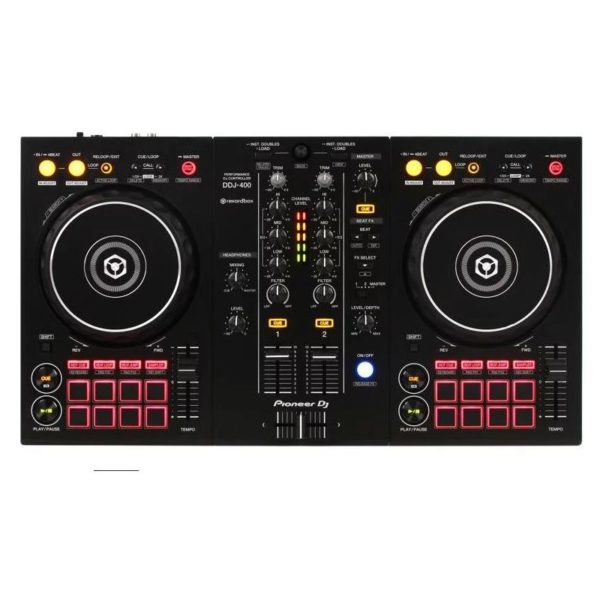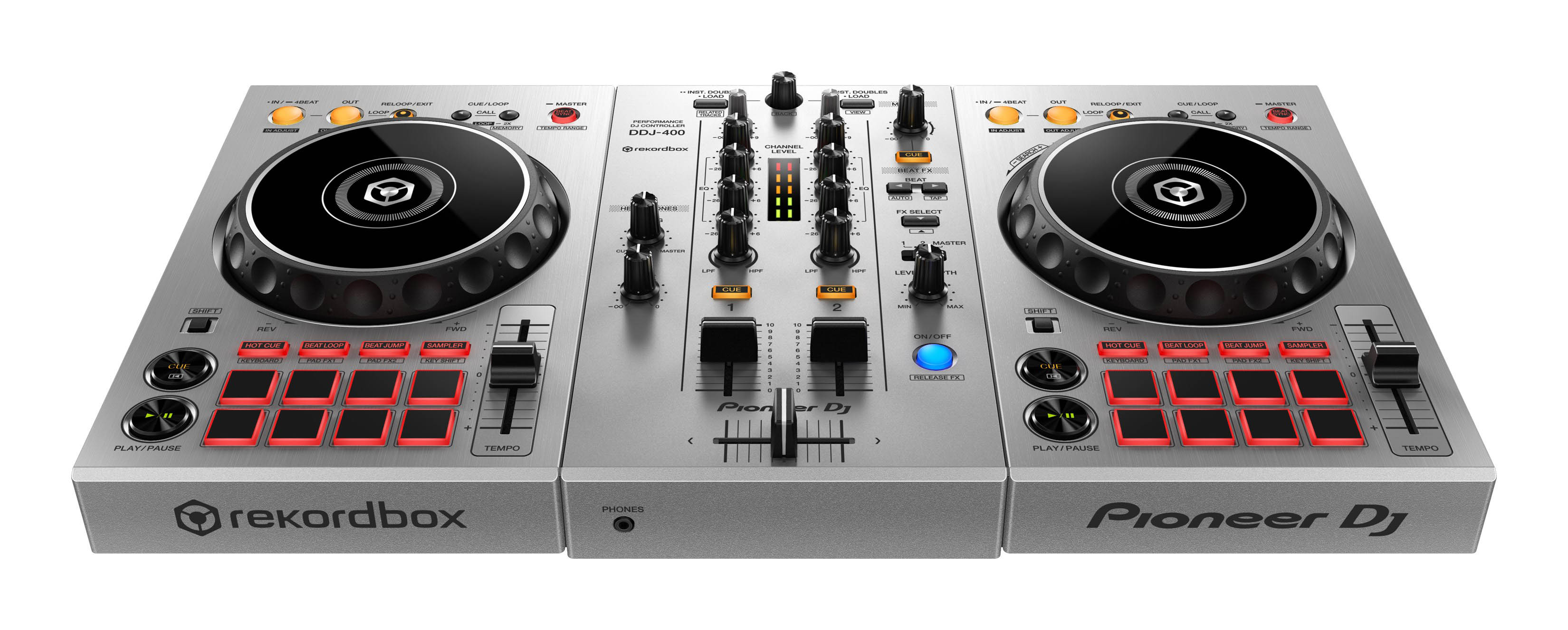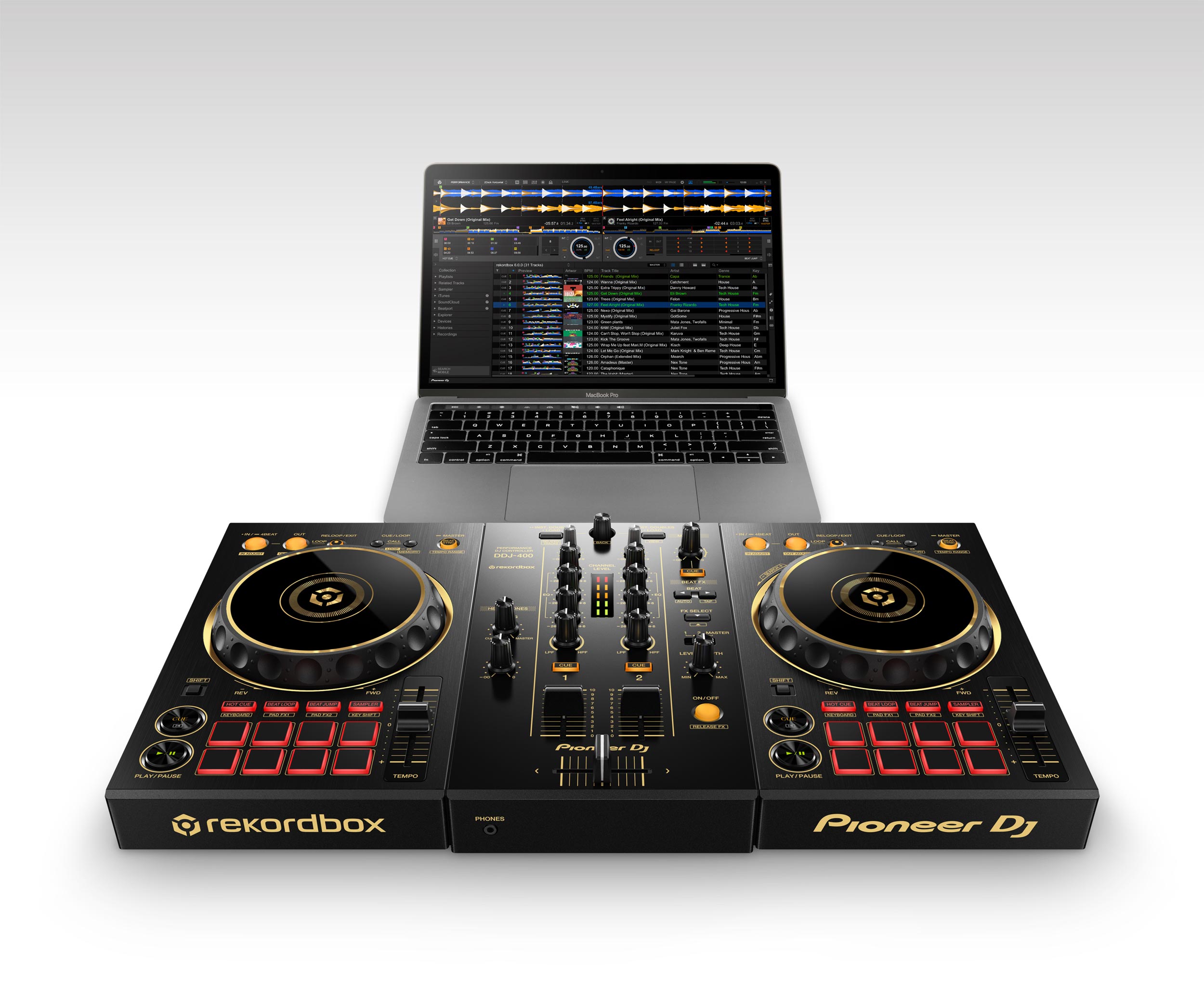

It’s also got some basic mixing tutorials, as well as a link to an archive of other Pioneer DJ tutorials for other kit in the Pioneer DJ product line. The DDJ-400 also unlocks a special tutorial section designed for new DJs to quickly get to grips with setting up the DDJ-400.

#Ddj 400 rekordbox pro
I do miss the flexibility of the per deck FX section found on the DDJ-RB, but then again you don’t get any of that when you spin with CDJs at the club, so if you have club or pro DJ aspirations you’re better off getting used to the Beat FX layout. Of course, you can also just click and select the effect using your laptop’s trackpad, so it’s not a dealbreaker. An FX Select knob would’ve been better than a button, as it’s quicker to go through effects that way. The controls and layout are similar to DJM mixers like the DJM-450 or the DJM-900NXS2, though the controls have been pared down to the absolute minimum.
#Ddj 400 rekordbox plus
Finally, you have a level / depth knob plus an effect on/off button. You also have two Beat buttons that let you shorten or lengthen the beat length or time of the effect, and you’ve got an FX deck select button – this lets you add effects to deck 1, deck 2, or anything coming out of the master output. You’ve got an FX select button, which lets you cycle down the list of available FX (or cycle up if you hold Shift). The FX controls for both decks on the DDJ-400 are consolidated in the Beat FX section, right beside the mixer. This was absent in the DDJ-RB, which was a bit annoying because that meant that there wasn’t any way to fine tune the mix you’re hearing in your cans. MonitoringĪ wonderful addition to the DDJ-400 is the headphone mix knob, which lets you adjust what you’re hearing in your cans between the master output and headphone cue. This way, looping becomes ingrained in your workflow, regardless if you’re spinning on the DDJ-400 or CDJs at the club. I think it’s smart because I always found the loop controls confusing moving from a DDJ-RZ to a pair of CDJs. The reason for the shift is because again, Pioneer DJ seems to want to standardise the controls of their gear, whether that’s club gear or controller DJ gear for home use. These Cue / Loop call buttons also double as loop half or loop double buttons, again just like those found on a CDJ or XDJ. It consists of a Loop In button that also doubles as a four-beat auto loop button, a Loop Out button, a reloop / exit button for either exiting or engaging the looped section again, plus Cue / Loop call buttons, which lets you cycle through Memory Cues and Loops. Instead of the usual auto loop buttons found on older DDJ controllers, or the Loop In / Loop Out controls in the DDJ-RB, you’ve now got a looping section similar to that of a CDJ or XDJ media player. One of the big layout changes on the DDJ-400 are the looping controls. This allows you to make more precise BPM adjustments when tempo matching two tracks. The tempo faders on the DDJ-400 have also been upgraded and are now longer than the ones found on the DDJ-RB, which were really short-throw faders. Scratch DJs will love how responsive these smaller jogs are – sure you’re missing a bit of the full-size traction and inertia of a meatier jogwheel, but they still feel great and scratching is indeed possible.

The main difference with the jogs on the DDJ-400 is how they look – they have a glossy top that provides more traction when you’ve got your hands on the jogwheel platter, and a rubber rim like those found on a CDJ or XDJ for a grippier pitch bending experience when nudging a track forwards or backwards. They’re responsive and we liked how they felt – they’ve got a nice heft to them similar to what you would expect on other DDJ controllers. They’re touch capacitive, like all the other DDJ controllers, and they are not mechanical like the ones found on the DDJ-1000 or on CDJ / XDJ media players. The jogs on the DDJ-400 are similar to the jogs on the DDJ-RB. The front of the unit has an 1/8” output jack for your headphones. The rear has a RCA Master output jacks, a 1/4” mic input with level knob and a USB jack.

Instead you’ve now got a Beat FX section in the right side of the mixer. If you’ve been using Pioneer controllers for a while now, you’ll notice that the decks don’t have their own FX sections, which usually consist of some knobs and buttons above the jogwheel. It’s also got a pitch fader and a loop section which looks similar to a CDJ or XDJ media player. There are two decks on the DDJ-400, with each deck having a 5” jogwheel, eight small performance pads with pad mode buttons: hot cue, beat loop, beat jump, sampler, keyboard, pad fx1, pad fx2, and key shift. It’s got three-band EQs, trim pots, filters volume faders and a crossfader in the mixer section, along with the requisite browse and track load buttons. The DDJ-400 is a two channel controller meant to be used with Rekordbox DJ, which also comes bundled with the unit.


 0 kommentar(er)
0 kommentar(er)
